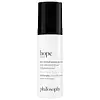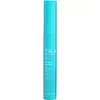What's inside
What's inside
 Key Ingredients
Key Ingredients

 Benefits
Benefits

 Concerns
Concerns

 Ingredients Side-by-side
Ingredients Side-by-side

Water
Skin ConditioningGlycerin
HumectantNeopentyl Glycol Diheptanoate
EmollientTribehenin PEG-20 Esters
EmollientCaprylic/Capric Triglyceride
MaskingOctyldodecyl Neopentanoate
EmollientPolyglyceryl-2 Diisostearate
EmulsifyingCarthamus Tinctorius Seed Oil
MaskingSodium Polyacrylate
AbsorbentPropanediol
SolventSodium Potassium Aluminum Silicate
Butylene Glycol
HumectantHydroxyacetophenone
Antioxidant1,2-Hexanediol
Skin ConditioningAcrylates/C10-30 Alkyl Acrylate Crosspolymer
Emulsion StabilisingCaprylyl Glycol
EmollientTocopheryl Acetate
AntioxidantMethylpropanediol
SolventSpirulina Maxima Extract
Smoothing3-O-Ethyl Ascorbic Acid
Skin ConditioningSambucus Nigra Flower Extract
RefreshingAdenosine
Skin ConditioningSodium Hydroxide
BufferingCitrus Reticulata Peel Extract
Skin ConditioningGlucosyl Hesperidin
HumectantHyaluronic Acid
HumectantSilanetriol
Citric Acid
BufferingCitrus Reticulata Fruit Extract
Skin ProtectingSodium Benzoate
MaskingPotassium Sorbate
PreservativeMica
Cosmetic ColorantCI 77891
Cosmetic ColorantWater, Glycerin, Neopentyl Glycol Diheptanoate, Tribehenin PEG-20 Esters, Caprylic/Capric Triglyceride, Octyldodecyl Neopentanoate, Polyglyceryl-2 Diisostearate, Carthamus Tinctorius Seed Oil, Sodium Polyacrylate, Propanediol, Sodium Potassium Aluminum Silicate, Butylene Glycol, Hydroxyacetophenone, 1,2-Hexanediol, Acrylates/C10-30 Alkyl Acrylate Crosspolymer, Caprylyl Glycol, Tocopheryl Acetate, Methylpropanediol, Spirulina Maxima Extract, 3-O-Ethyl Ascorbic Acid, Sambucus Nigra Flower Extract, Adenosine, Sodium Hydroxide, Citrus Reticulata Peel Extract, Glucosyl Hesperidin, Hyaluronic Acid, Silanetriol, Citric Acid, Citrus Reticulata Fruit Extract, Sodium Benzoate, Potassium Sorbate, Mica, CI 77891
Water
Skin ConditioningCaprylic/Capric Triglyceride
MaskingHydrogenated Ethylhexyl Olivate
EmollientGlycerin
HumectantButylene Glycol
HumectantCetearyl Alcohol
EmollientLactococcus Ferment Lysate
Skin ConditioningSodium Potassium Aluminum Silicate
Carthamus Tinctorius Seed Oil
MaskingCamelina Sativa Seed Oil
Skin ConditioningSilybum Marianum Seed Oil
Skin ConditioningCurcuma Longa Root Extract
MaskingCitrus Aurantium Dulcis Peel Extract
Emulsion StabilisingAlbizia Julibrissin Bark Extract
MaskingAvena Sativa Bran Extract
AbrasiveCamellia Sinensis Leaf Extract
AntimicrobialVaccinium Angustifolium Fruit Extract
Skin ProtectingCichorium Intybus Root Extract
MaskingAlgae Extract
EmollientBacillus Ferment
Skin ConditioningOlus Oil
EmollientHydrogenated Olive Oil Unsaponifiables
EmollientAcetyl Hexapeptide-8
HumectantLactic Acid
BufferingYogurt Powder
Hydrolyzed Rice Protein
Skin ConditioningTocopheryl Acetate
AntioxidantAscorbyl Palmitate
AntioxidantDarutoside
Skin ConditioningAmmonium Acryloyldimethyltaurate/Vp Copolymer
Silica
AbrasiveXanthan Gum
EmulsifyingInulin
Skin ConditioningAcrylates/C10-30 Alkyl Acrylate Crosspolymer
Emulsion StabilisingSodium Hydroxide
BufferingCitric Acid
BufferingSodium Chloride
MaskingSodium Hyaluronate
HumectantSorbic Acid
PreservativeHexylene Glycol
EmulsifyingCaprylyl Glycol
EmollientEthylhexylglycerin
Skin ConditioningPentylene Glycol
Skin ConditioningSodium Benzoate
MaskingPotassium Sorbate
PreservativePhenoxyethanol
PreservativeCI 77891
Cosmetic ColorantWater, Caprylic/Capric Triglyceride, Hydrogenated Ethylhexyl Olivate, Glycerin, Butylene Glycol, Cetearyl Alcohol, Lactococcus Ferment Lysate, Sodium Potassium Aluminum Silicate, Carthamus Tinctorius Seed Oil, Camelina Sativa Seed Oil, Silybum Marianum Seed Oil, Curcuma Longa Root Extract, Citrus Aurantium Dulcis Peel Extract, Albizia Julibrissin Bark Extract, Avena Sativa Bran Extract, Camellia Sinensis Leaf Extract, Vaccinium Angustifolium Fruit Extract, Cichorium Intybus Root Extract, Algae Extract, Bacillus Ferment, Olus Oil, Hydrogenated Olive Oil Unsaponifiables, Acetyl Hexapeptide-8, Lactic Acid, Yogurt Powder, Hydrolyzed Rice Protein, Tocopheryl Acetate, Ascorbyl Palmitate, Darutoside, Ammonium Acryloyldimethyltaurate/Vp Copolymer, Silica, Xanthan Gum, Inulin, Acrylates/C10-30 Alkyl Acrylate Crosspolymer, Sodium Hydroxide, Citric Acid, Sodium Chloride, Sodium Hyaluronate, Sorbic Acid, Hexylene Glycol, Caprylyl Glycol, Ethylhexylglycerin, Pentylene Glycol, Sodium Benzoate, Potassium Sorbate, Phenoxyethanol, CI 77891
Ingredients Explained
These ingredients are found in both products.
Ingredients higher up in an ingredient list are typically present in a larger amount.
Acrylates/C10-30 Alkyl Acrylate Crosspolymer is a synthetic polymer. It is used to thicken and improve the texture of products. Due to its properties, it can prevent water and oil ingredients from separating.
Butylene Glycol (or BG) is used within cosmetic products for a few different reasons:
Overall, Butylene Glycol is a safe and well-rounded ingredient that works well with other ingredients.
Though this ingredient works well with most skin types, some people with sensitive skin may experience a reaction such as allergic rashes, closed comedones, or itchiness.
Learn more about Butylene GlycolThis ingredient is an emollient, solvent, and texture enhancer. It is considered a skin-softener by helping the skin prevent moisture loss.
It helps thicken a product's formula and makes it easier to spread by dissolving clumping compounds.
Caprylic Triglyceride is made by combining glycerin with coconut oil, forming a clear liquid.
While there is an assumption Caprylic Triglyceride can clog pores due to it being derived from coconut oil, there is no research supporting this.
Learn more about Caprylic/Capric TriglycerideCaprylyl Glycol is a humectant and emollient, meaning it attracts and preserves moisture.
It is a common ingredient in many products, especially those designed to hydrate skin. The primary benefits are retaining moisture, skin softening, and promoting a healthy skin barrier.
Though Caprylyl Glycol is an alcohol derived from fatty acids, it is not the kind that can dry out skin.
This ingredient is also used as a preservative to extend the life of products. It has slight antimicrobial properties.
Learn more about Caprylyl GlycolCarthamus tinctorius seed oil comes from safflower, one of humanity's oldest crops.
Safflower seed oil contains a high percentage of linoleic acid and oleic acid. It also contains Vitamin E. These three components are effective moisturizers.
Vitamin E helps nourish your skin's lipid barrier. It is also a potent antioxidant. Antioxidants help fight free-radical molecules, or unstable molecules that may damage your skin cells.
Due to its high fatty acid content, this ingredient may not be malassezia folliculitis safe.
Thoughout history, safflower has been used for dying fabrics and in food as a saffron substitute.
Learn more about Carthamus Tinctorius Seed OilCi 77891 is a white pigment from Titanium dioxide. It is naturally found in minerals such as rutile and ilmenite.
It's main function is to add a white color to cosmetics. It can also be mixed with other colors to create different shades.
Ci 77891 is commonly found in sunscreens due to its ability to block UV rays.
Learn more about CI 77891Citric Acid is an alpha hydroxy acid (AHA) naturally found in citrus fruits like oranges, lemons, and limes.
Like other AHAs, citric acid can exfoliate skin by breaking down the bonds that hold dead skin cells together. This helps reveal smoother and brighter skin underneath.
However, this exfoliating effect only happens at high concentrations (20%) which can be hard to find in cosmetic products.
Due to this, citric acid is usually included in small amounts as a pH adjuster. This helps keep products slightly more acidic and compatible with skin's natural pH.
In skincare formulas, citric acid can:
While it can provide some skin benefits, research shows lactic acid and glycolic acid are generally more effective and less irritating exfoliants.
Most citric acid used in skincare today is made by fermenting sugars (usually from molasses). This synthetic version is identical to the natural citrus form but easier to stabilize and use in formulations.
Read more about some other popular AHA's here:
Learn more about Citric AcidGlycerin is already naturally found in your skin. It helps moisturize and protect your skin.
A study from 2016 found glycerin to be more effective as a humectant than AHAs and hyaluronic acid.
As a humectant, it helps the skin stay hydrated by pulling moisture to your skin. The low molecular weight of glycerin allows it to pull moisture into the deeper layers of your skin.
Hydrated skin improves your skin barrier; Your skin barrier helps protect against irritants and bacteria.
Glycerin has also been found to have antimicrobial and antiviral properties. Due to these properties, glycerin is often used in wound and burn treatments.
In cosmetics, glycerin is usually derived from plants such as soybean or palm. However, it can also be sourced from animals, such as tallow or animal fat.
This ingredient is organic, colorless, odorless, and non-toxic.
Glycerin is the name for this ingredient in American English. British English uses Glycerol/Glycerine.
Learn more about GlycerinPotassium Sorbate is a preservative used to prevent yeast and mold in products. It is commonly found in both cosmetic and food products.
This ingredient comes from potassium salt derived from sorbic acid. Sorbic acid is a natural antibiotic and effective against fungus.
Both potassium sorbate and sorbic acid can be found in baked goods, cheeses, dried meats, dried fruit, ice cream, pickles, wine, yogurt, and more.
You'll often find this ingredient used with other preservatives.
Learn more about Potassium SorbateSodium Benzoate is a preservative. It's used in both cosmetic and food products to inhibit the growth of mold and bacteria. It is typically produced synthetically.
Both the US FDA and EU Health Committee have approved the use of sodium benzoate. In the US, levels of 0.1% (of the total product) are allowed.
Sodium benzoate works as a preservative by inhibiting the growth of bacteria inside of cells. It prevents the cell from fermenting a type of sugar using an enzyme called phosphofructokinase.
It is the salt of benzoic acid. Foods containing sodium benzoate include soda, salad dressings, condiments, fruit juices, wines, and snack foods.
Studies for using ascorbic acid and sodium benzoate in cosmetics are lacking, especially in skincare routines with multiple steps.
We always recommend speaking with a professional, such as a dermatologist, if you have any concerns.
Learn more about Sodium BenzoateSodium Hydroxide is also known as lye or caustic soda. It is used to adjust the pH of products; many ingredients require a specific pH to be effective.
In small amounts, sodium hydroxide is considered safe to use. However, large amounts may cause chemical burns due to its high alkaline.
Your skin has a natural pH and acid mantle. This acid mantle helps prevent harmful bacteria from breaking through. The acid mantle also helps keep your skin hydrated.
"Alkaline" refers to a high pH level. A low pH level would be considered acidic.
Learn more about Sodium HydroxideThis silicate is used to add color to cosmetics. It can also add bulk or be used to adjust the viscosity.
Like other silicates, this ingredient mostly remains on the skin's surface.
The word “aluminum” can raise concerns about toxicity or systemic accumulation. In the context of Aluminum Dimyristate, these concerns are unfounded at normal usage levels. There’s no credible evidence linking it to cancer or neurological diseases.
Learn more about Sodium Potassium Aluminum SilicateTocopheryl Acetate is AKA Vitamin E. It is an antioxidant and protects your skin from free radicals. Free radicals damage the skin by breaking down collagen.
One study found using Tocopheryl Acetate with Vitamin C decreased the number of sunburned cells.
Tocopheryl Acetate is commonly found in both skincare and dietary supplements.
Learn more about Tocopheryl AcetateWater. It's the most common cosmetic ingredient of all. You'll usually see it at the top of ingredient lists, meaning that it makes up the largest part of the product.
So why is it so popular? Water most often acts as a solvent - this means that it helps dissolve other ingredients into the formulation.
You'll also recognize water as that liquid we all need to stay alive. If you see this, drink a glass of water. Stay hydrated!
Learn more about Water